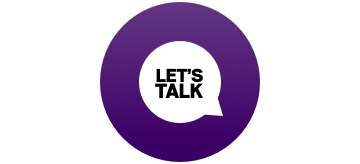- Find an office
-
File Your Taxes
 Find a Location
Find a Location -
Resolve Tax Issues
 Resolve Tax Issues
Resolve Tax IssuesResolve Tax Issues
-
Tax Resources
 See all Tax Help
See all Tax HelpTax Tools
Tax Tips & Resources
- Where's My Refund
- Refund Advance
- Hiring Local Jobs!
- Tax Services
- Promotions & Coupons
- Careers
- Search
- Contact Us
- Feedback
-
 Log in | Sign up
Log in | Sign up

JH Accounts
|
|
Oh no! We may not fully support the browser or device software you are using ! To experience our site in the best way possible, please update your browser or device software, or move over to another browser. |

We can help resolve your tax issues. Call (855) 357-8933 today.

Back Taxes and Tax Debt
The “Real” Cost of an IRS Offer in Compromise (OIC)
When taxpayers can’t pay their tax bill with their assets and monthly income, they may qualify for an offer in compromise (OIC). The OIC for "doubt as to collectibility" is for people who probably won’t be able to pay the IRS before their collection statute expires (generally 10 years from the date the IRS assesses the tax). The OIC allows them to settle their tax bill for less than the full amount.
The IRS can also accept an OIC under other circumstances, like if there is “doubt as to liability,” when paying the full tax bill would create an economic hardship, or when exceptional circumstances would make paying the full tax bill unfair and inequitable.
The OIC program gets a lot of hype in the media, but the IRS rarely settles tax bills. In 2019, of 20 million taxpayers who owed $539 billion in back taxes, only 54,225 of them applied for an OIC, and the IRS accepted only 17,890 OICs. The IRS accepted even fewer OICs in 2020 and 2021 than in 2019.
Why do so few get an OIC?
First, most applicants may not qualify. They may have equity in assets or future income that can pay their tax bills before the collection statute expires. For example, the IRS would not settle a tax bill with a taxpayer who owes $20,000 in tax debt and has a retirement account worth $50,000, unless there were special circumstances.
Second, it may cost too much to settle. Taxpayers can’t always come up with the OIC offer amount.
In 2020, the IRS released final regulations that increased the OIC user fee to $205 from $186. While a 10% increase may seem like a lot, it’s only a small part of the potential cost of an OIC. The user fee usually does deter many people from applying for an OIC. The real cost is how much you will need to settle the tax bill. This amount is called the offer amount and represents a calculation of how much the IRS will accept to settle a tax bill.
Third, you have to be compliant. Most people won’t qualify for an OIC unless they have filed all tax returns and made all required estimated tax payments for the current year (if applicable). To qualify, business owners with employees must have made all required federal tax deposits for the current quarter. Plus, taxpayers with an open bankruptcy can’t apply for an OIC.
The real cost: the offer amount
Most people think that the IRS haggles with taxpayers about how much it will take to settle the tax bill. Some think that the IRS will take a percentage of the bill or waive penalties and interest in a settlement. These are all myths.
If you qualify for an OIC, the IRS will then determine how much it will accept from you to settle the debt. This offer amount is also called the reasonable collection potential (RCP). It’s the amount that the IRS can reasonably collect from you before the collection statute expires.
RCP is a formula equal to your net realizable equity in assets, plus a component of your future monthly disposable income (usually 12 or 24 months), depending on the OIC payment method.
An illustration of the OIC settlement amount
Let’s use a simple example to illustrate offer amount calculation. First, assume that a taxpayer couple owes $50,000 for 2016 (also assume that the IRS has 100 months left on the statute of limitations to collect), and has a net realizable equity in assets and future income as follows:
Net realizable equity in assets (only asset is the home): $10,000
Assume the taxpayers have no cash, no investments, no retirement plan, and no other equity in assets. The only equity is in their home.
Facts about the home the taxpayers own with a mortgage:
- Fair market value of $150,000
- Value of home at quick sale value of 80% (the IRS values asset sales at quick-sale value) = $120,000
- Loan of $110,000
- $120,000 (quick sale value) - $110,000 (loan) = $10,000 new realizable equity in assets
Future monthly disposable income: $200 a month
Facts about monthly disposable income:
- Two earners, with allowable IRS living expenses (the IRS limits expenses based on Collection Financial Standards):
- Monthly average gross income: $6,000
- Monthly average necessary living expenses and expenses to produce income*: $5,800
- $6,000 (average gross income per month) - $5,800 (average necessary living expenses per month) = $200 monthly disposable income
*Note: Allowable living expenses include categories such as food/clothing/misc., housing/utilities, transportation expenses, medical expenses, and others such as taxes paid, health insurance, term life insurance, child care costs, court-ordered payments, etc.
First, do the taxpayers qualify for an OIC?
In this case, the taxpayers qualify for an OIC. They have $10,000 in net realizable equity in assets and $200 in monthly disposable income. Those amounts wouldn’t satisfy their full tax debt before the collection statute expires.
Here is the computation that shows that they qualify:
- The taxpayers’ total ability to pay the IRS before the collection statute expires is equal to $10,000 (equity) plus the amount the IRS could collect from the taxpayers in monthly payments ($200 a month in monthly disposable income for 100 months, or $20,000). That means the taxpayers could pay $30,000 before the collection statute expires.
- $30,000 is less than the $50,000 tax bill the taxpayers owe. The IRS won’t be able to collect the total tax bill before the collection statute expires. The IRS will collect $30,000 and write off $20,000 at the end of the statute, if the IRS is collecting based on the taxpayers’ current financial condition.
Next, what’s their offer amount?
The taxpayers won’t be paying $30,000 in an OIC. Instead, they will need to figure out their net realizable equity in assets, plus a future multiplier of their monthly disposable income, which depends on the payment option they choose. The payment options are:
- A lump sum cash offer, payable in 5 or fewer installments within 5 months after the offer is accepted. For the lump sum option, the taxpayers would use 12 months as the future income multiplier. Their offer amount would be $12,400 ($10,000 in equity plus $2,400, or $200 a month in monthly disposable income x 12 months).
- A periodic payment offer, payable in 6 or more monthly installments over 24 months. For this payment option, the future income multiplier would be 24 months. Their offer amount would be $14,800 ($10,000 in equity plus $4,800, or $200 a month in monthly disposable income x 24 months).
The real cost, as illustrated in our example, is the offer amount. Can the taxpayers pay $12,400 to settle their tax bill? The reality is many can’t and therefore can’t use the OIC program.
OIC upfront costs
There are also two upfront costs when you submit an OIC application to the IRS: the $205 user fee and a partial payment of the offer amount. Unless you qualify as a low-income taxpayer, you will need to be able to pay some of the OIC before the IRS approves it. The IRS won’t refund any upfront payment, even if you don’t qualify for the OIC.
- In our example, if the taxpayers selected the lump sum payment method, the IRS would request 20% of the offer amount with the application. That would be $2,480.
- If the taxpayers chose the periodic payment method, they would have to make monthly payments while the IRS considers their offer. Most OICs take between 7 and 12 months to complete, which means the taxpayers would send 7 to 12 monthly payments to the IRS. These payments can be considerable, and there’s no guarantee that the IRS will accept the OIC. In fact, in 2020, the IRS approved only one-third of OIC applications.
OIC costs don’t end there. If an appeal is involved, you can add more costs to the equation. Fifteen percent of OIC applications go to IRS appeals to settle disagreements in the application.
All in all, if you aren’t absolutely sure that the IRS will approve your OIC with your proposed offer amount, the OIC can be an expensive and unworkable solution.
Other viable alternatives
Low-income taxpayers (taxpayers who are 250% or below the poverty level for their family size and income) don’t have to pay an OIC user fee or down payment and generally don’t have a significant financial outlay when submitting an OIC. IRS Form 656 (the OIC application) provides income thresholds. However, taxpayers who meet the low-income criteria still need to be able to pay the offer amount over the agreed period if the IRS approves the OIC.
There are alternatives for people who can’t pay their tax bill and don’t qualify for, or can’t use, the OIC option. Collection alternatives include currently not collectible (CNC) status and installment agreements, including the partial-pay installment agreement. CNC status means that you have no monthly disposable income to pay the IRS. The partial-pay installment agreement allows you to pay the IRS monthly, but your overall payment won’t cover your total tax bill before the collection statute expires.
These two options can be better than an OIC, because they don’t always require that you sell or borrow against your assets to pay. If you’re in a financial hardship situation, you won’t have to use your equity in your home, savings, etc, if you need the funds to pay for living expenses, or you can’t access the equity (for example, if a bank won’t grant you a home equity loan). CNC status and the partial-pay installment agreement are often more realistic options for taxpayers.
If you qualify, both agreements can be more financially beneficial than the OIC. However, both are temporary agreements with the IRS. If your financial condition improves before the collection statute expires, the IRS can renegotiate these terms.
A last tip
If you’re facing tax debt, you should consider all IRS collection alternatives, not just the OIC. Also consider contesting any balances you owe, including penalties.
The best approach is to evaluate your tax situation, your personal finances, and IRS collection alternatives, then develop the best approach to pay the least amount owed. Focusing only on the OIC may lead to an expensive miss and leave your tax debt problem unresolved. For help creating a strategy to address your tax issue, visit Jackson Hewitt’s Tax Resolution Hub to see the various ways we can help you.
Because trust, guarantees, convenience & money all matter

-
TRUSTED GUARANTEES.
Be 100% certain about your money & your taxes, year after year.
-
NATIONAL PRESENCE. LOCAL HEART.
We’re in your neighborhood & inside your favorite Walmart store.
-
40+ YEARS. 65+ MILLION RETURNS.
The kind of trusted expertise that comes with a lifetime of experience.





